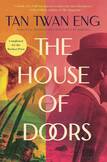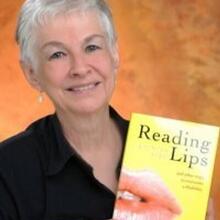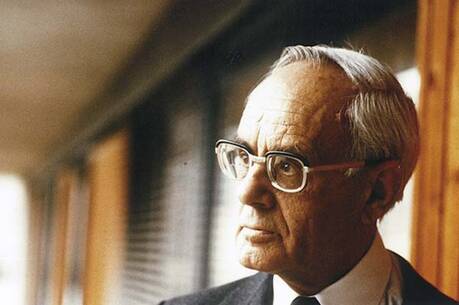Review: Tan Twan Eng’s new novel summons the spirit of Somerset Maugham
“The Letter,” one of the most successful of W. Somerset Maugham’s stories, appeared in 1926 and is still popular today. It recounts the trial of Ethel Proudlock for the 1911 murder of her secret lover in Kuala Lumpur. She was found guilty and sentenced to hang but was eventually pardoned on the condition that she leave the country. Although Maugham added a letter that incriminated Proudlock, he otherwise changed very little in his quasi-fictional account. His short story became a successful 1927 play and later was adapted for several films.
The story of “The Letter” serves as the linchpin of Tran Twan Eng’s third novel, The House of Doors, which was selected for the 2023 Booker Prize long list. Although the judges deemed it “historical fiction at its finest,” and noted that the book draws on the life and writing of Maugham, I would add that the book draws heavily on Maugham’s life and is both biographical and historical fiction—with its most vivid sections showcasing Maugham.
Eng includes Maugham’s thoughts on writing with quotes from his writer’s notebook. He describes Maugham’s preference for writing while looking at a blank wall instead of a garden or a beach. He even tries to get inside Maugham’s head as he is writing. When he sees a gardener padding barefoot, “his footsteps surprisingly pink, his footsteps as light as… Willie (as his friends called him) foraged in his mind for a description, finding it a second later: as though he was a brief sojourner in a strange land.”
Although Maugham traveled widely, he is most often associated with stories inspired by his visits to the Federated Malay States during the 1920s. He and his lover, Gerald Haxton (who posed as his secretary), avoided Maugham’s home in England, where homosexual relations were considered a crime. Maugham wanted to elude scandal as well as hide his affair from his wife.
During his trips, he listened to people share memories of their hidden lives, often involving adultery and criminal actions. He rendered those into some of his best-known short stories, which were published as The Casuarina Tree. Later, people who had confided their life secrets to Maugham felt that the details in his stories too closely resembled those that they had shared with him. Maugham was banned from the Federated Malay States and threatened with lawsuits.
Tan Twan Eng, who was born in Penang, Malaysia, is a Maugham aficionado and specializes in historical fiction set in the Far East. He is praised for his attention to his settings, which seem almost as vivid as his characters. His titles suggest as much. His first novel, The Garden of Evening Mist, received the Man Asian Literary Prize. His second novel, The Gift of Rain, was nominated for the Man Booker Prize.
Blending the real and the invented, The House of Doors pivots on a house whose center hallway is lined with painted doors hanging from wires. When the air circulates through the house, the doors spin revealing other painted doors giving the characters the feeling of being in a “constantly shifting maze, each pair of doors opening into another passageway, and another.”
The vivid image of revolving doors evokes the pattern of Eng’s novel. It attempts to be a mirror of “The Letter,” using some of the same motifs and characters. Eng spotlights four letters. One tells Maugham that he is bankrupt; another is one that Leslie Hamlyn, the protagonist, tells Arthur, her lover, not to send; a third is a letter she plans to send to him; and the fourth is a letter that Maugham invented as part of the Ethel Proudlock murder case.
Eng’s novel circles back and forward from 1947 to 1910 to 1921, moving from Hamlyn’s first-person accounts to chapters written in third person featuring Somerset Maugham. Set mostly at the Cassowary House, named after a tree in Hamlyn’s yard, The House of Doors brims with allusions to numerous Maugham stories.
As Eng tells it, Maugham stays in Penang with his friends Robert and Leslie Hamlyn, planning to write a biography of Sun Yat Sen, the revolutionary who became president of China. He also wants to catch up with Robert, whom he met during World War I. But Robert is busy with his law firm as well as with one of his clerks, with whom he is having an affair. Maugham then spends his time with Leslie, who becomes a conduit for events that took place 20 years previously.
The two converse about everything from the flowers in Leslie’s garden to the history of Penang to Sun Yat Sen to Penang’s place in Chinese and world history to the notorious Proudlock murder case (including the revelation that Leslie Hamlyn was close friends with Proudlock) to social issues of the time like feminism and homosexuality to the Hamlyn’s private lives and love affairs.
Leslie Hamlyn was educated in convent schools and speaks several languages. She tells Maugham about growing up in Penang, where, she says, everybody knows everyone’s secrets. Robert has told her that Maugham spills the secrets of the people he interviews and that she should be careful of revealing private information to him. But Willie was “easy to talk to, too easy,” she says, and she has trouble being discreet. One of the numerous questions raised in the novel is whether Maugham will reveal Leslie’s secrets—which could destroy her marriage.
Eng’s book begins in 1947, when Leslie, now living on a sheep farm in South Africa, receives a signed copy of Maugham’s 1926 story collection, The Casuarina Tree. Skimming through the pages, Leslie remembers Maugham’s 1921 visit to her former home in Penang. During that time (as the story flashes back), she and Willie share stories from their lives in a “One Thousand and One Nights” fashion.
Leslie Hamlyn’s stories, which form most of the narrative, recall the years 1910 and 1911 when she learns that her husband is having a homosexual affair. Furious, she doesn’t want to divorce him because they have two sons, so she begins an affair with Arthur Loh, who owns the house of doors in the book’s title. She met Arthur through his connection to Sun Yat Sen who lives in Penang with his family and tries to rally supporters for his attempt to take over the government of China. He gives numerous talks encouraging wealthy citizens to contribute to the cause.
Maugham shares anecdotes about his difficult upbringing after his parents died when he was raised by his aunt and uncle, who was an Anglican vicar. They were kind but had strict religious standards. He developed a stammer and begged God to heal him. His prayers were not answered, and he rejected Christianity.
But he clung to the hamsa, a Moorish symbol that his father placed on the window of the family home. This image of a stylized hand, according to believers, connects to Mohammed’s daughter, Fatima, and Moses’s sister, Miriam. It is considered to offer protection from the evil eye. Maugham went on to use the hamsa or “the Hand of Fatima,” as a motif in his writing, and it appears on the title page of most of Maugham’s books.
The hamsa appears on the title page of Eng’s story. At various times, Leslie discusses its meaning. She sees it on the front door of the house of doors where she meets Arthur Loh. After he goes to China with Sun Yat Sen, she studies the symbol, wanting it to keep him alive and ensure his safe return to Penang.
Toward the story’s end, Leslie asks Maugham if the hamsa actually helps him. Maugham thinks about it and recounts numerous events in his life—such as his encounters with extreme danger, bouts with serious illnesses like tuberculosis, and even an incident when he and Gerald Haxton, his lover, nearly drowned in a tidal wave. And he decides that yes, the hamsa works.
This gives Leslie hope, but according to the twists of Eng’s mysterious novel, it may just be a false hope.











